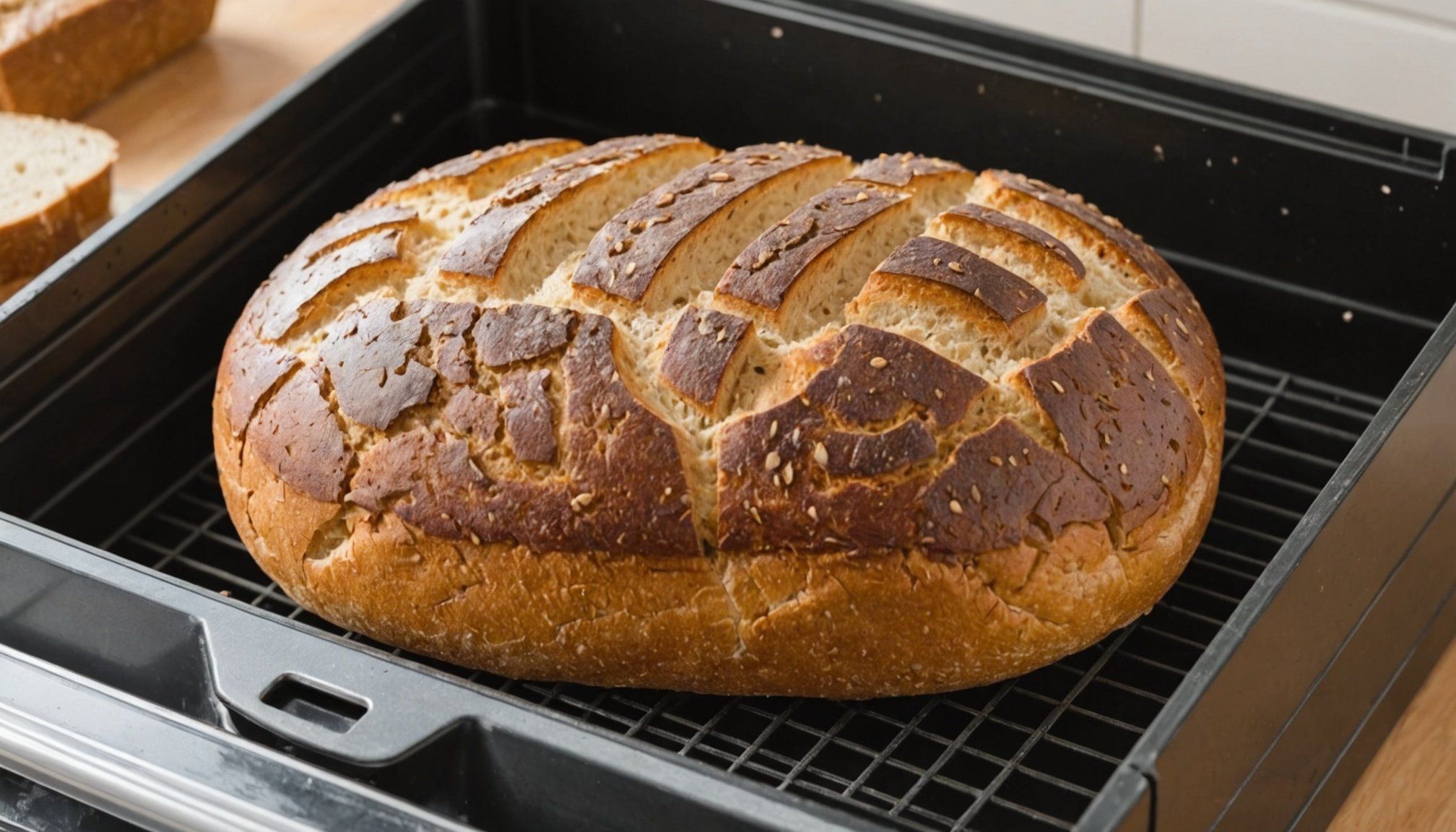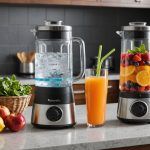Understanding Mold Growth in Bread Boxes
Mold growth is often influenced by various conditions that make bread boxes susceptible to infestation. Humidity and temperature play pivotal roles; mold thrives in warm, damp environments. When bread is kept in a poorly ventilated box, moisture accumulates, accelerating mold formation.
The material of a bread box can significantly impact mold prevention. Porous materials like wood can absorb moisture but also retain it, potentially increasing mold risk if not regularly maintained. In contrast, metal and plastic boxes tend to provide better barriers against moisture ingress, though they may also trap humidity if not well-ventilated.
This might interest you : Unveiling the benefits of electric can openers: how they surpass traditional manual models
Different types of mold, such as Penicillium and Aspergillus, are common in bread boxes. They can cause spoilage symptoms like fuzzy growth and a musty odour. Some molds might not be visible initially, so regular checks are necessary to ensure bread safety and quality.
Preventing mold requires keeping bread boxes clean and dry. Ensure optimal airflow and a stable environment to maintain mould at bay. Regular cleaning with vinegar or baking soda solutions can reduce potential spore development, preserving bread freshness.
This might interest you : Essential kitchen scrapers: the ultimate tools for easy dough management and quick cleanup!
Proper Storage Techniques for Bread
Selecting the right storage location is crucial for maintaining bread freshness. Bread storage options like the fridge or pantry have unique benefits. While refrigerating bread may extend its shelf life, it can also make it staler, affecting taste and texture. Alternatively, a pantry provides a suitable environment, provided the temperature remains stable.
Air circulation within storage spaces is essential. Bread should breathe to avoid trapping moisture, which encourages mold. Bread boxes with ventilation slots help circulate air, preventing humidity buildup.
When organizing bread, avoid stacking loaves tightly. This can lead to uneven air flow and exacerbate moisture problems. Instead, arrange them so that each loaf has adequate space. By doing so, you ensure even air distribution around each loaf, maintaining quality.
Also, consider the use of breathable bags for storage. These can protect bread from external conditions while allowing air circulation. Overall, adopting these bread storage techniques can significantly reduce mold risks and keep your bread fresher for longer periods.
Selecting the Right Bread Box
Finding the right bread box materials significantly impacts the prevention of mold and maintaining bread freshness. When considering materials, wood, metal, and plastic each have unique advantages and potential drawbacks. Wood is traditional and aesthetically pleasing but can absorb moisture, posing a mold risk if not properly maintained. In contrast, metal and plastic provide better barriers to moisture but may need to offer adequate ventilation to avoid humidity build-up inside.
Essential features in a vented bread box include ventilation slots or mechanisms that allow for air circulation, helping to keep your bread dry and reducing the potential for mold growth.
When choosing a bread box, consider sturdy models with a secure closure to keep pests out while allowing airflow. Some recommended storage options might include models from brands known for quality craftsmanship and practical design tailored to extending bread freshness, though specific recommendations were not included in this text.
With these considerations in mind, selecting the appropriate bread box becomes a more informed and effective step in maintaining and enhancing bread longevity.
Best Practices for Bread Freshness
Ensuring bread freshness is key to enjoying quality baked goods. Begin by assessing bread for any spoilage signs like off smells, change in texture, or unusual mould growth. This vigilance allows you to act promptly, preventing the consumption of compromised products.
To extend shelf life, utilise techniques such as storing bread in a cool, dry place, where moisture and warmth are minimal. If freezing bread for longer periods, wrap it in airtight packaging. This process helps preserve the bread’s structure and flavour until needed.
Incorporating expiration dates into your routine offers an excellent way to manage bread consumption systematically. By rotating bread products using this method, older loaves are consumed first, reducing the risk of spoilage. Implementing these strategies ensures your bread remains fresher for as long as possible, enhancing both its safety and enjoyment.
Expert Tips for Mold Prevention
Incorporating expert advice can significantly enhance your approach to mold prevention in the home. Foods preservation specialists recommend maintaining a hygienic environment for all bread-storing tools, highlighting the necessity of regular cleaning. Bread boxes and their surroundings should be wiped with vinegar or baking soda solutions weekly to deter mold growth.
Adopting everyday tips like refraining from touching bread with wet or unclean hands can reduce the likelihood of contamination. Consider rotating your bread storage to adhere to the first-in, first-out rule, ensuring older products are consumed first.
Seasonal changes can affect storage strategies. Higher humidity in warmer months necessitates increased ventilation, making a vented bread box a wise investment. Meanwhile, during colder months, ensure the bread box is in a dry, stable area. Using these strategies, you can effectively combat seasonal mold challenges.
Lastly, consult further with preservation experts or household guides for additional practical, everyday hacks, ensuring you’re well-equipped to offer optimal protection against mold. This proactive approach ensures a fresher and safer bread experience.
Cleaning and Maintaining Your Bread Box
To ensure your bread box remains a safe haven for fresh loaves, maintaining bread box hygiene is crucial. Regular cleaning can prevent mold re-infestation, starting with an understanding of the materials your bread box is made from. For wooden bread boxes, use a mix of mild soap and water; avoid soaking, as wood can swell. Metal and plastic bread boxes can be wiped with vinegar or baking soda solutions for effective mold removal. Prioritize hygienic practices by cleaning your bread box at least once a week.
To combat mold growth, maintain cleanliness around the bread box area. Avoid using harsh chemicals that could leave residues. After cleaning, ensure the box is thoroughly dry before placing bread back inside, as moisture can trigger mold reappearance. This is a proactive step towards preventing mold re-infestation.
Implementing these cleaning routines will not only preserve bread freshness but also extend the shelf life of your stylish storage solution. By attentively following this bread box hygiene regiment, you create an environment resistant to mold, supporting the longevity and quality of your beloved bread.
Troubleshooting Common Mold Issues
Addressing mold issues in your bread storage begins with identifying common mistakes. Bread box problems often stem from inadequate cleaning and poor humidity control. Regular inspections can ensure that your bread box maintenance routine is effective. Pay close attention to ventilation, as blocked or insufficient air circulation can contribute to moisture retention, fostering mold growth.
In the event mold does appear, act quickly to mitigate its spread. Begin by emptying the bread box and cleaning all surfaces with a mixture of vinegar and water; this solution serves as an effective mold removal agent. Ensure the box is completely dry before restocking.
If mold consistently returns despite preventive measures, reconsider your storage location. High humidity areas can exacerbate mold problems, so placing the bread box in a dry, well-ventilated spot is essential. Applying desiccant solutions, like silica gel packs, can help control moisture levels further.
By reassessing your storage strategy and maintaining thorough cleaning routines, you can effectively combat recurring mold troubles. This proactive approach will keep your bread storage environment wholesome, preserving the quality and safety of your bread.











